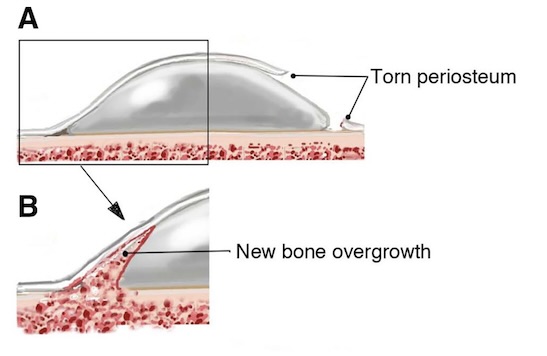We are pleased to announce that Dr. Madorsky’s article on the interaction between bone and chin implants has been published in Plastic and Reconstructive Surgery Global.
This research provides significant insights into the science of chin augmentation, notably by dispelling the misconception that implants cause bone erosion. The article decodes the complexities of implant-periosteum interaction and offers valuable guidance for improved chin implant procedures.
Background:
Bone resorption has been imputed to silicone chin implants as the cause of the reported bone changes with chin augmentation. Bone remodeling is complex. Both neo-ossification and bone resorption can occur.
Methods:
A literature review was performed on bone complications of silicone chin implants and bone remodeling with periosteal manipulation. Available data from plastic surgical and dental literature, alongside a case observation showing neo-ossification 10 years after implantation, were analyzed and used to explain patterns of bone changes around chin implants.
Results:
Periosteal elevation induces bone formation. Spur-like neo-ossification with silicone chin implants is caused by subperiosteal implant placement. Our case describes such neo-ossification 10 years after silicone chin implantation. The pressure of an implant on bone can cause limited bone resorption. The pressure of an implant trapped under a forming bone shelf can cause significant bone resorption in rare cases.
Conclusions:
Previously reported mandibular bone resorption ascribed to silicone chin implants has been overwrought. Bone formation is more common with silicone chin augmentation. We propose surgical modifications to limit bone complications of chin implants based on the reviewed literature. Surgical approaches to periosteal elevation and implant insertion and consideration of alternate biomaterials to silicone chin implants may improve outcomes of chin augmentation.

